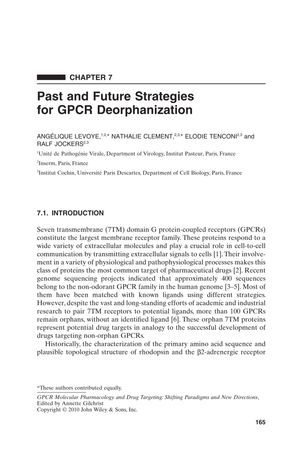Past and Future Strategies for GPCR Deorphanization
July 2010

TLDR Finding functions for unknown GPCRs is hard but key for making new drugs.
The document reviews the progress and future directions in identifying ligands for G protein-coupled receptors (GPCRs), which are significant for physiological processes and as pharmaceutical targets. It notes that over 100 GPCRs remain orphans, and classical strategies like homology-based screening have reached their limits. New approaches are needed, including considering GPCR dimerization and G protein-independent pathways. Techniques such as reverse pharmacology, sequence homology, and the use of knockout mice have been employed with varying success. The document also highlights the importance of considering GPCR heterodimerization and allosteric modulation in the deorphanization process. Despite challenges, such as high levels of constitutive activity and controversies in the field, the document suggests that systematic screening for interaction partners could be beneficial. It concludes that while difficult, deorphanizing GPCRs is crucial for drug development.